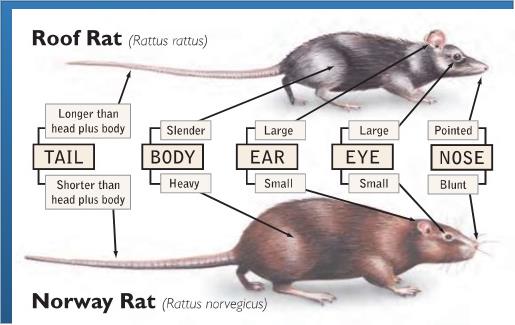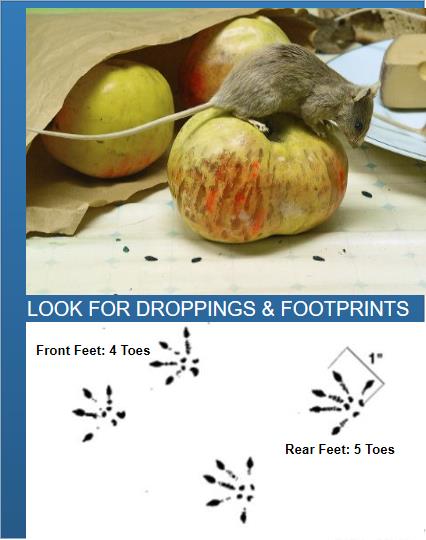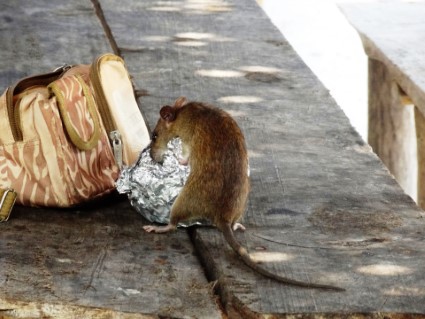
Rats are long-tailed, medium-sized rodents that originated in Asia but are now found worldwide. Old World rats, also known as true rats, belong to the genus Rattus. However, other rodent genera having several of the same attributes are also referred to as rats. Rats are discriminated from mice by having large heads, blunt snouts, thick bodies, and large feet. There are sixty-six species of rats, with the most common species being the roof rat and the Norway rat. The Norwegian rat also referred to as the brown rat, Parisian rat, wharf rat, common rat, street rat, sewer rat, and Hanover rat, is found on every continent except Antarctica. The ship rat, also known as the roof rat, house rat, and black rat, has a more limited geographical range than the brown rat, preferring coastal areas and warmer climates. Like house mice, roof rats and Norway rats are commensal rodents because they are dependent on human beings for the basic necessities of life, including food, water, and shelter. Rats, like house mice, are nocturnal animals, although Norway rats are often active during the day. Old World rats are omnivorous scavengers and are one of the most destructive creatures known to humanity. Rats contaminate food, structures, and property and transmit disease and parasites, including fleas, lice, and mites, to humans and other animals. Rat-borne diseases have taken the lives of more humans in the last ten centuries than all of the casualties of all the wars combined. Old World rats are invasive species that have contributed to the extinction of many wildlife species, including small mammals, birds, reptiles, invertebrates, and plants.



Roof rats are not always black, but they are darker in color than Norway rats.

Roof rats are smaller than Norway rats.

Roof rats nest in trees, shrubs, and attics of Long Island homes. Norway rats nest in underground burrows, frequently found beneath residential foundations, sheds, and decks. When Norway rats enter homes, they usually remain in the basement or the ground floor.

Roof rats have a pointed muzzle, and the muzzle of Norway rats is blunt.

Roof rats have a longer tail than the combined length of their heads and bodies. Norway rats possess a tail that is shorter than their body length.



Rat burrows may be found individually, or there may be multiple burrows along foundations, fences, beneath concrete slabs, under debris, and in gardens. Norway rats excavate extensive burrow systems, and the tunnel entrances are usually two to four inches in diameter.

Runways are worn paths created in the dirt or grass along walls or fences as a result of rats traveling the same route nightly foraging for food.

Rat footprints can be seen in dust or soft, moist soil. Rats have a four-toed front and five-toed back impression. The rear print of a rat will be about one inch in length.

Rat droppings are 3/4" long and 1/4" thick and are pointed at the ends. A single rat can produce fifty droppings a day.

Gnaw marks on door corners, wires, and cables.

Holes in the walls and damage to carpeting often indicate a rat infestation.

Grease marks result from oil on the rat's fur coming in contact with walls or entrance openings.

Sounds in the walls or attic at night, including high-pitched squeaking, may be coming from rats.

Rat urine stains are observable using a black light.

Rat nests can consist of almost any shredded material, including paper, straw, cardboard, plastic bags, or rags, and may be found in the walls or attics of Long Island homes.

Musky odors are a consequence of rat inhabitation.
The incredible fecundity of rats presents challenges to controlling them. Rats are prolific breeders and will breed throughout the year if suitable conditions exist. Rats begin mating at about eleven weeks of age, and pregnancies generally last three weeks. The litter size usually ranges from six to fourteen pups, and females often mate within eighteen hours of giving birth. A female rat can produce five or more litters per year. Long Island, Pest Control exterminators, can offer Long Island property owners a comprehensive solution to their rodent control issue, which includes;



Rodent Inspection - This is the initial step in the rat removal and control process. Our licensed Long Island exterminators will inspect your residence for rodent activity and determine how the rats are gaining access to it. As part of our inspection, we will be looking for what wildlife habitat modifications that can be made as part of our rodent control program

Rat Trapping & Removal - There are quite a few traps available to control rats. Successful rat trapping and removal are subject to using the correct traps and baits for the situation. Effective rat trapping depends on the proper placement of the traps and using the right number of them.

Rat Exclusion - Upon the conclusion of the rat removal process at your Long Island home, or business, our contractor will rodent-proof your premises to keep rats out permanently.